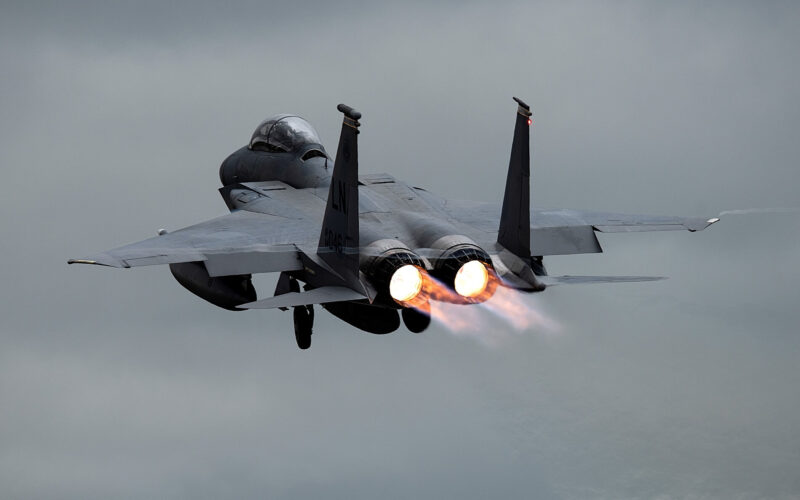A detachment of F-15C/D Eagles of the United States Air Force (USAF) was deployed to Keflavik Air Base, Iceland, in support of NATO Air Police operations. They will have the mission of defending the sovereignty of the country’s airspace against foreign incursions.
Iceland, an island country halfway between Europe and North America, does not have any air defense element. In fact, except for its coastguard and a small Icelandic Peacekeeping Guard, the country has no standing army. As such, Iceland, a founding member of NATO, relies on foreign air forces to defend its airspace.
However, unlike Baltic Air Policing, the foreign presence is not continuous and fellow NATO members only deploy their fighters for a couple of weeks, several times a year. This time, four McDonnell-Douglas F-15C/D Eagle fighter jets of the 493rd Expeditionary Fighter Squadron will undertake this task, while the USAF will assume “full control of NATO’s commitment to the region” from October 12, 2020.
“The routine deployment demonstrates Alliance solidarity and the transatlantic linkage at work,” said U.S. Air Force Brigadier General Andrew Hansen, NATO Allied Air Command Deputy Chief of Staff Operations.
The F-15 Strike Eagle is one of the elders of the United States arsenal. Since it entered service in 1976, the fighter jet dedicated to air superiority was regularly updated.
The 493rd Fighter Squadron “Grim Reapers” based at RAF Lakenheath, in the United Kingdom, is the only F-15C squadron in Europe. The fighter jets should be joined by a Boeing KC-135R Stratotanker from RAF Mildenhall, for aerial refueling. The deployment is expected to last until at least November 2020.
Russian flybys regularly hit the news in Iceland. Between 2006 and 2016, over 107 Russian bombers were recorded entering the Icelandic airspace. In September 2020, the neighboring country of Norway said it had already reached the previous year’s number of interceptions (Quick Reaction Alert) to identify Russian military planes.

